Last February, I posted a series of photos and a video of the vigorous flow of water from Comanche Springs in Fort Stockton, Texas. You might want to take a moment and refresh your memory because this update won’t be as meaningful without the comparison.
Fort Stockton has averaged about 14″ of precipitation each year for the last 70 years, according to the National Weather Service. 2010 was a wetter-than-normal year and the region recorded about 17″ of rainfall. 2011 was a stark contrast, as the rainfall total dropped off to a depressing 2.84″.
And so we see what seems to be a logical link between a severe drought and the following photos that I captured yesterday and that document the fact that Comanche Springs is, well, dry. (Click on each photo to pop up a bigger version; use the arrows to move through the collection.) Most of the photos below are updates to their counterparts in the above-linked post. I didn’t bother with any videos since a movie of a dry springbed is fairly non-dramatic.
I decided to undertake this update because the folks who are proposing to pump millions of gallons of water each day from the aquifer that feeds this spring and sell it to Midland have argued that the water table is drought-resistant, if not downright drought-proof. I wouldn’t attempt to refute that argument based on a few photos taken at a particular point in time, but the pictures do seem to make the argument less compelling than it might otherwise be.
Discover more from The Fire Ant Gazette
Subscribe to get the latest posts sent to your email.

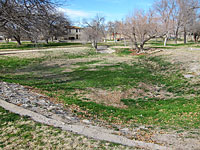
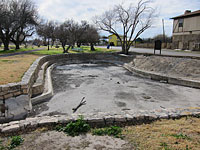
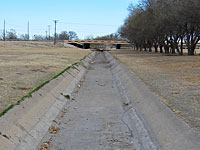
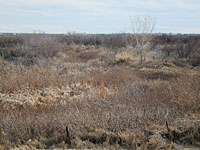
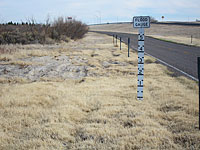
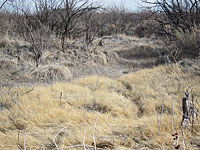
One of the nice things about the middle of winter, in Fort Stockton, is that there is a chance for Commanche Spring to once again reach the surface … for a short while recapturing at least a little bit of its former glory … before agricultural interests to the west begin their operations for the new year, and the spring once again dries up.
It used to be an item of local interest, a front-page item in the newspaper, with a photo of the water flowing above ground, and people turning out to see it, and explore – on foot, or even canoe – the marsh/pond area north of the old hospital location.
This time last year was exceptional, as it was across West Texas, as many areas were still drying out after the rains we had in spring/summer 2010.
2011 proved to be an exceptional year in the exact opposite direction … and I’m not surprised that your photos the pools and canals around Rooney Park have already dried-up, even before serious irrigation has begun out west.
It’s been decades, now, since Fort Stockton’s last water wars, which wiped out the irrigated farms north of town, along the Imperial Highway. Though I am a resident of the Tall City, I can’t help but wish Fort Stockton luck in their latest water war – one that could imnpact the entire community.
Irrigation is already occurring around Belding.
If you look at the rainfall records for 2010, Fort Stockton actually got more rain during the last four months of 2011 than during that year. That surprised me.